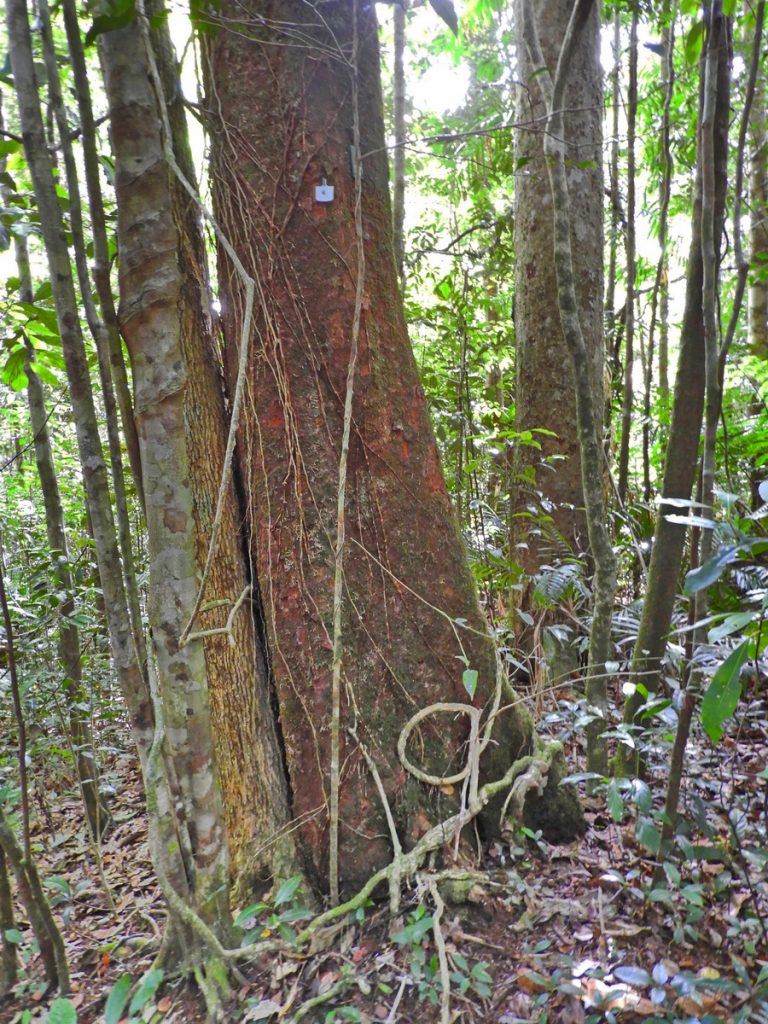The washing-board tree (Cryptocarya corrugata) belongs to the Laurel family (Lauracea). There are over 300 species in the genus Cryptocarya, most of which inhabit cloud covered rainforests. This particular species is endemic to central and northern Queensland upland rainforests.
On close inspection the tree has distinctive red flakey bark and conspicuous fist to saucer-sized dimples along its trunk where the bark has flaked off. The sap-wood has a corrugataed surface, but this is largely masked by the outer bark.

The washing-board tree can grow up to 35m tall and occasionally has a butressed trunk. The cut bark and outer wood (a blaze) smells like sugar cane, but with alternative common names such as Bull’s Breath and Acid Wood this smell be a matter of personal perception.
The twigs and new leaves are covered in twisted brown hairs, while the older leaves become hairless (glabrous) with age
The fruit of the Washing-board tree are also distinctive. They are large ( 15-22mm high x 22-34mm wide) and broad or bilobed with a smooth to shiny purple-black outer surface. Flowering occurs in December, with mature fruit developing the following September. The fruit are eaten by cassowaries and fruit doves.

The wood of the washing board tree is infrequently used for general purpose timber under the name “Corduory Laurel.
You can find a tagged specimen (#4) of this species near the beginning of the H-Track (starting at Whalley Cr) on the right hand side of the track. This tree is part of a Guide to the Trees of the H-Track which is currently being revised with new text and new white tags.
Text by Jamie Oliver
